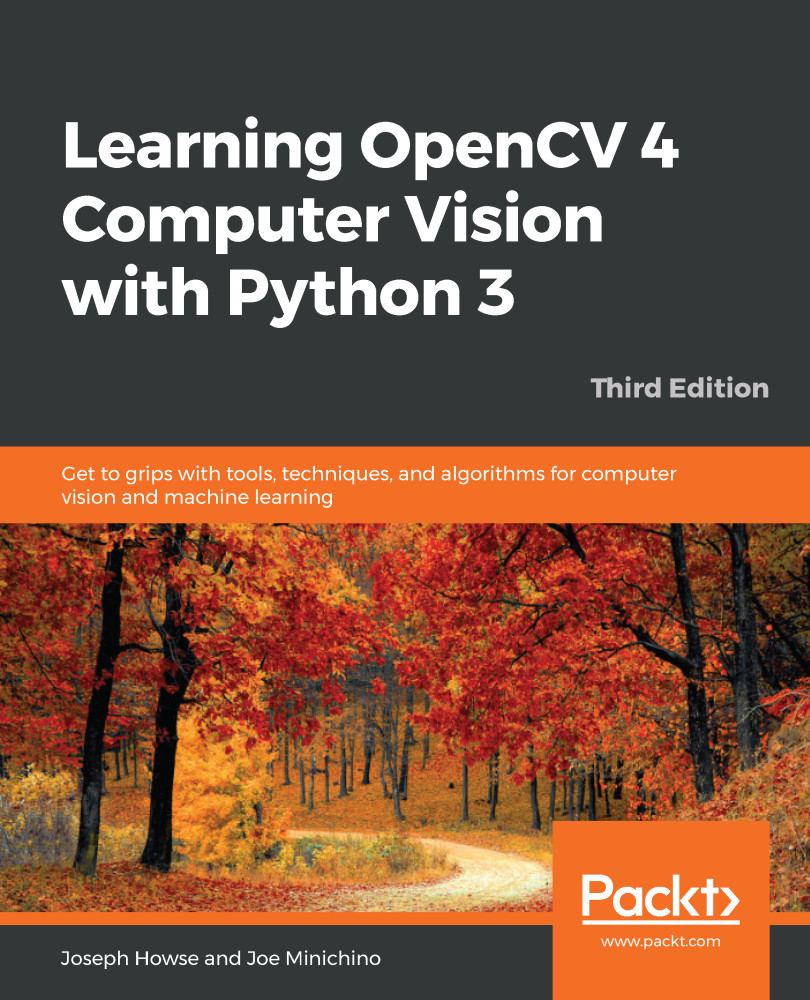This chapter begins by showing you how to use data from a depth camera to identify foreground and background regions, such that we can limit an effect to only the foreground or only the background.
After covering depth cameras, the chapter proceeds with other techniques for depth estimation, namely, stereo imaging and structure from motion (SfM). The latter techniques do not require a depth camera; instead, they rely on capturing images of a subject from multiple perspectives with one or more ordinary cameras.
Finally, the chapter covers segmentation techniques that allow us to extract foreground objects from a single image. By the end of the chapter, you will learn several ways to segment an image into multiple depths or multiple objects. Specifically, we will cover the following topics:
- Using a depth camera to capture depth maps, point cloud...


